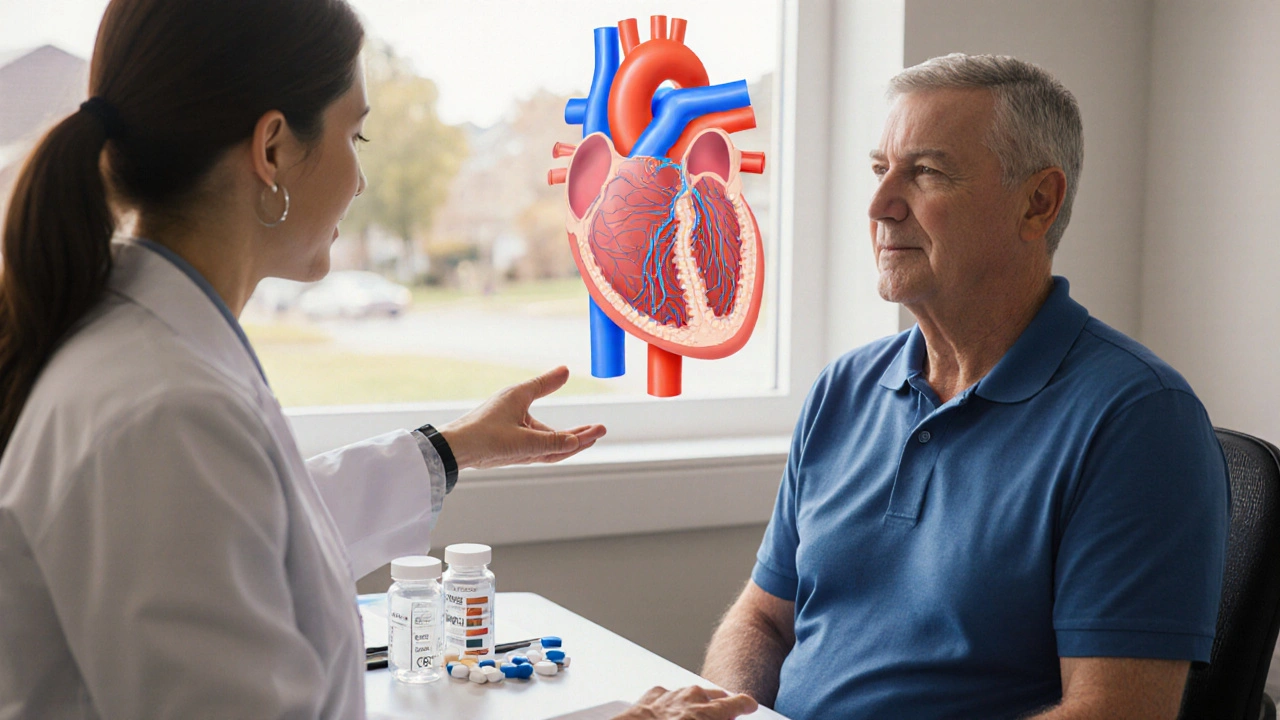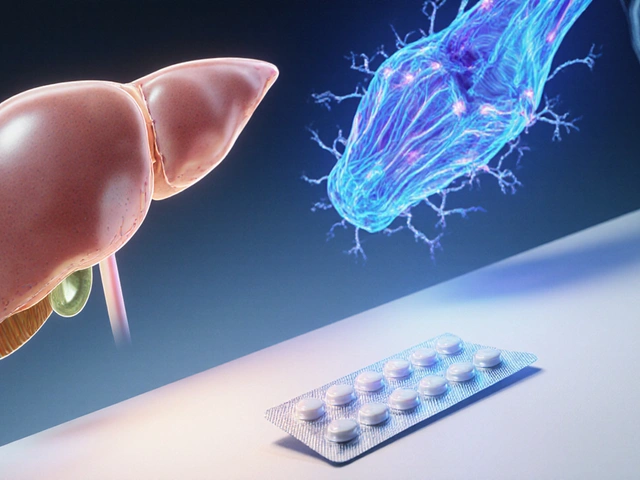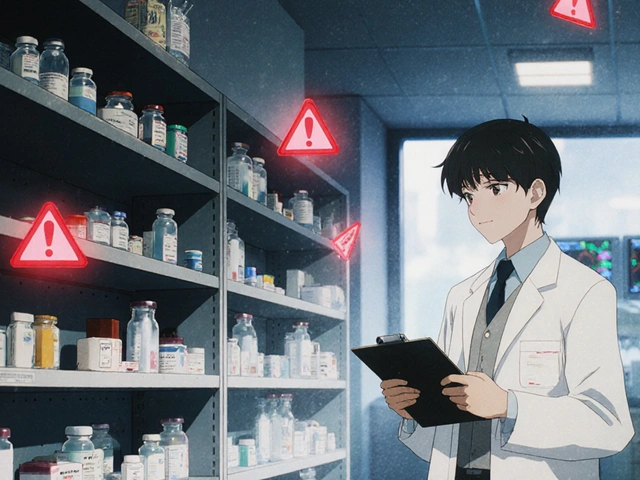Chlorthalidone: What It Is and How to Use It Safely
If you’ve been prescribed a pill called chlorthalidone, you might wonder why your doctor chose it. The short answer: it’s a cheap, long‑acting diuretic that helps lower blood pressure and reduce fluid buildup. Below you’ll find plain‑English facts about how it works, how to take it, what to watch for, and where to get it without a headache.
How Chlorthalidone Works
Chlorthalidone belongs to the thiazide‑type diuretic family. It tells your kidneys to let more sodium and water leave your body in the urine. Less fluid in your bloodstream means your heart doesn’t have to work as hard, which drops your blood pressure. It also helps with swelling (edema) caused by heart failure or liver disease. Because it stays in your system for about 24‑48 hours, most doctors ask you to take it once a day.
Practical Tips for Taking Chlorthalidone
Take the tablet in the morning with a full glass of water. This reduces the chance you’ll get up at night to pee. If you miss a dose, just take it as soon as you remember—unless it’s almost time for the next one, then skip the missed dose and continue as usual.
Watch your potassium levels. Chlorthalidone can push potassium out of your body, leading to muscle cramps or irregular heartbeats. Eating potassium‑rich foods like bananas, oranges, or spinach can help, but talk to your doctor before adding supplements.
Stay hydrated, but don’t overdo it. Drinking too much water can dilute your electrolytes, while drinking too little can make the diuretic work too hard and cause low blood pressure. Aim for the amount of fluid your doctor recommends, usually around 1.5‑2 liters a day.
Common side effects include mild dizziness, headache, or a slight increase in blood sugar. If you notice severe muscle pain, sudden weight loss, or dark urine, call your doctor right away—these could signal rare but serious reactions.
Drug interactions matter. NSAIDs (like ibuprofen), certain antidepressants, and lithium can reduce the effectiveness of chlorthalidone or increase the risk of kidney problems. Always list every medication and supplement you take when you get a new prescription.
Buying chlorthalidone online? Stick to licensed pharmacies that require a prescription. Look for a UK or EU registration number, a clear privacy policy, and a physical address. Avoid sites that offer “no‑prescription” sales or prices that seem too good to be true—they often sell counterfeit pills.
Cost‑saving tip: many generic versions are available and cost a fraction of brand‑name drugs. Check if your health insurance covers the generic, and compare prices at a few reputable online pharmacies before you order.
Finally, keep regular follow‑up appointments. Your doctor will want to check your blood pressure, electrolytes, and kidney function after you start chlorthalidone. Those lab checks help catch any issues early and let your dose be fine‑tuned.
In a nutshell, chlorthalidone is a low‑cost, once‑daily pill that can keep your blood pressure in check and shrink unwanted swelling. Take it in the morning, watch your potassium, stay hydrated, and use only trusted pharmacies. With these simple steps you’ll get the most benefit and the fewest hassles.
Combipres (chlorthalidone & clonidine) vs Top Hypertension Alternatives - Full Comparison
By Lindsey Smith On 29 Sep, 2025 Comments (19)

A practical guide comparing Combipres (chlorthalidone & clonidine) with common hypertension drugs, covering how it works, efficacy, side effects, dosing, and when to choose it.
View More




